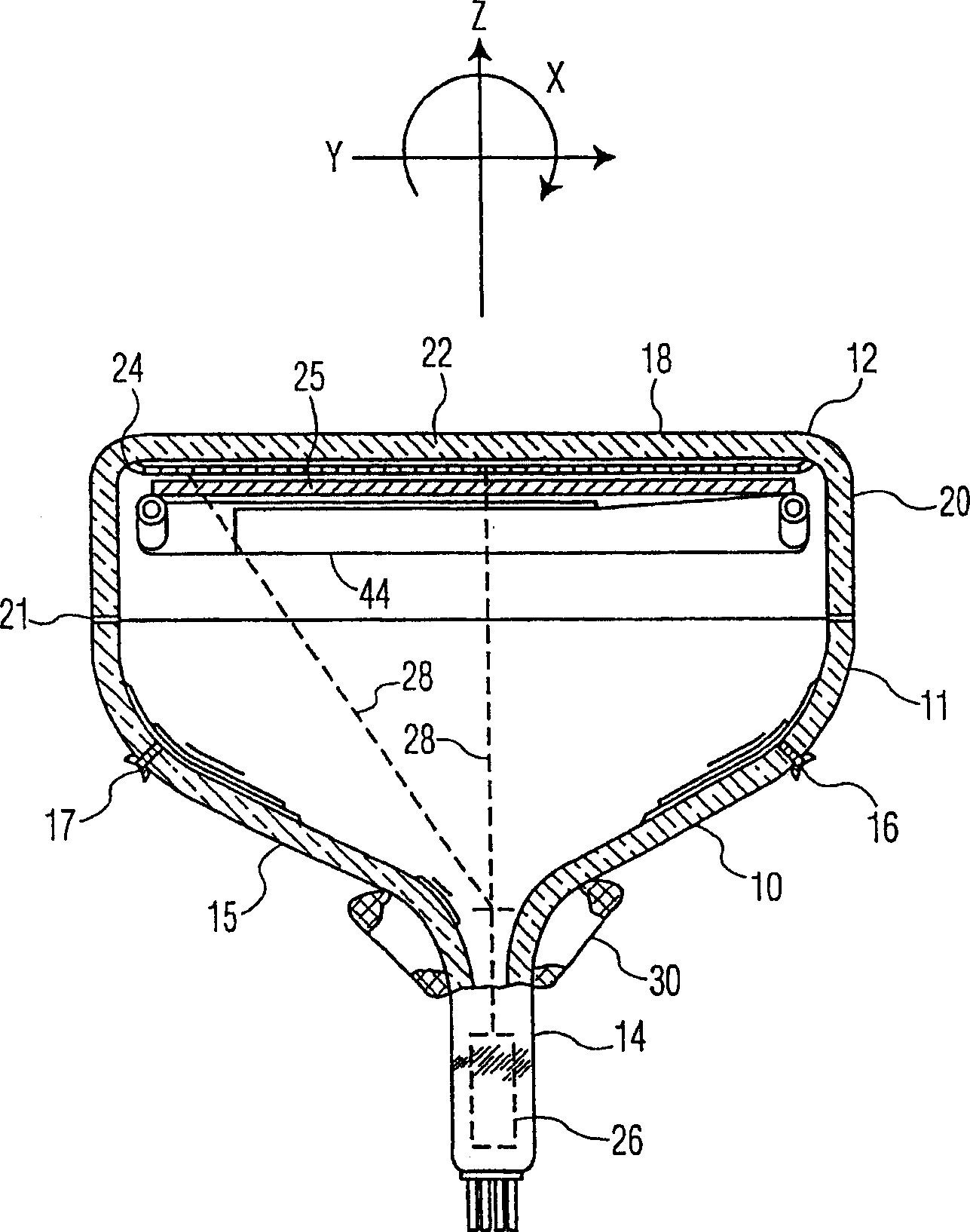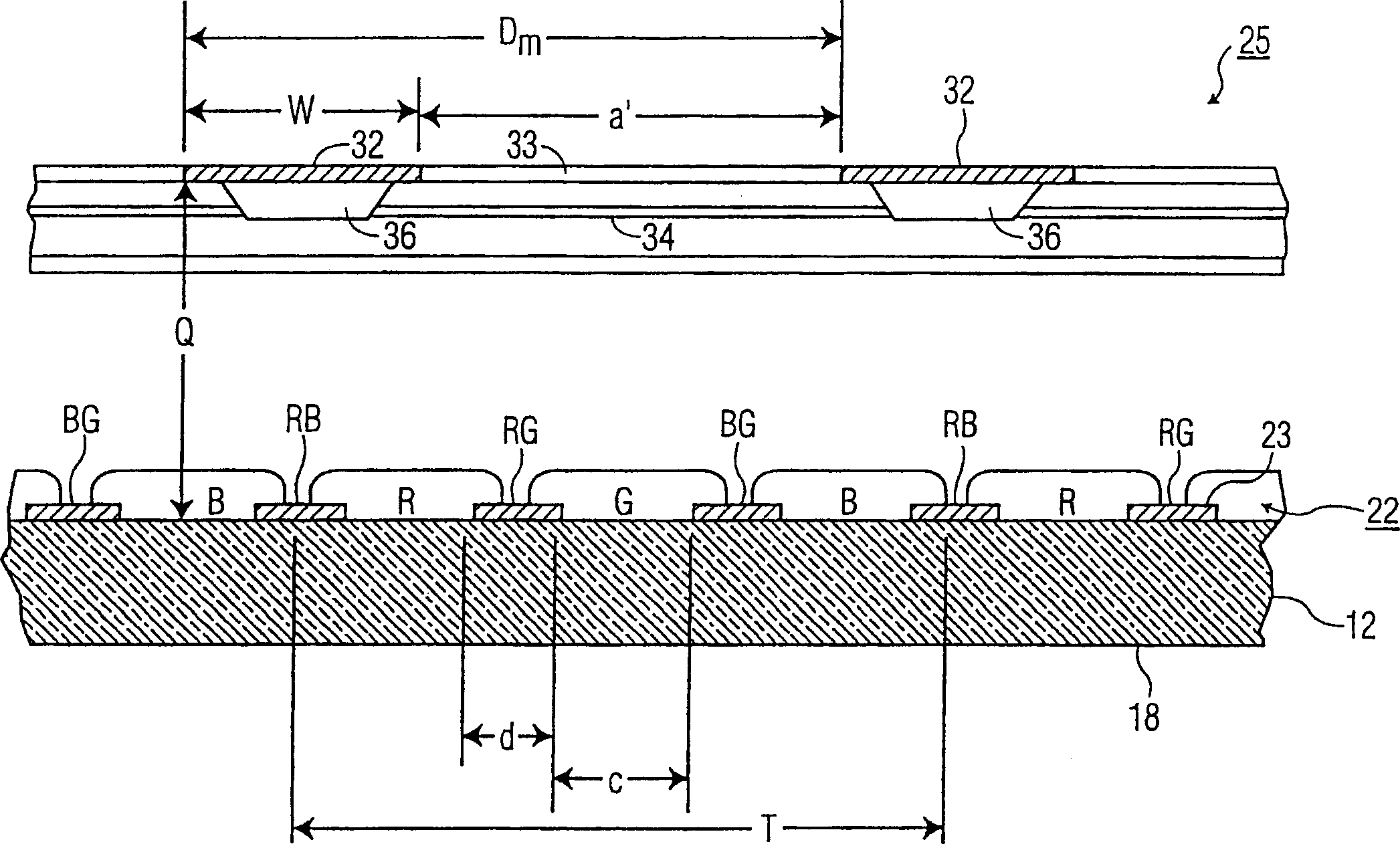Method of manufacturing a matrix for a cathode-ray tube (CRT)
A substrate and electrode technology, applied in cathode ray tube/electron beam tube, cold cathode manufacturing, electrode system manufacturing, etc., can solve problems such as different sizes, misalignment, and inability to realize porous baffles
- Summary
- Abstract
- Description
- Claims
- Application Information
AI Technical Summary
Problems solved by technology
Method used
Image
Examples
Embodiment Construction
[0024] figure 1 A color cathode ray tube (CRT) 10 is shown having a glass envelope 11 comprising a face plate 12 and a neck 14 joined by a funnel 15 . The funnel 15 has an internal conductive coating (not shown) that contacts the anode button 16 and extends from the anode button 16 to the neck 14 .
[0025] Panel 12 includes a viewing panel 18 and a peripheral flange or side wall 20 sealed to funnel 15 by glass frit 21 . On the inner surface of the viewing panel 18 is carried a three-color fluorescent screen 22 . Such as figure 2 The screen 22 shown in cross-section in is a line screen, which includes a plurality of screen elements including red, green and blue fluorescent strips R, G and B arranged in triplets, respectively, Each triplet includes fluorescent lines for each of the three colors. The R, G and B fluorescent stripes are usually printed in a vertical direction.
[0026] Such as figure 2 The light absorbing matrix 23 is shown separating the fluorescent lines...
PUM
 Login to view more
Login to view more Abstract
Description
Claims
Application Information
 Login to view more
Login to view more - R&D Engineer
- R&D Manager
- IP Professional
- Industry Leading Data Capabilities
- Powerful AI technology
- Patent DNA Extraction
Browse by: Latest US Patents, China's latest patents, Technical Efficacy Thesaurus, Application Domain, Technology Topic.
© 2024 PatSnap. All rights reserved.Legal|Privacy policy|Modern Slavery Act Transparency Statement|Sitemap



